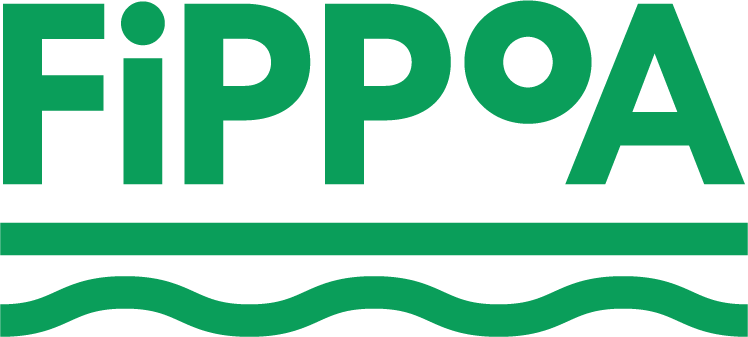
How We Got Here
From Barrier to Beach
What’s in a name?
No one agrees where the name “Fire Island” came from, so it really depends on which story you want to believe. The “Fire Islands” may have been a misspelling of “vier” on early maps created by early Dutch explorers. Some say it comes from William Nicholls, who patented the “Five Islands” on the western end of Fire Island in 1688. Or you could believe the legend that the name refers to the fires lit by pirates on the island, hoping to lure ships to run aground. The “fire” could refer to color of poison ivy or its effects on humans! It could also refer to the fiery ball of the sun when it sets over the Great South Bay. Choose whichever you prefer!
How The Pines Became The Pines
Fire Island Pines is approximately 1.5 miles long from east to west—larger than most communities—but, like most of the communities on Fire Island, only a quarter-mile wide. The Pines has about 700 residences, including 600 single-family houses and 100 co-op apartments. About half of the houses are owner-occupied and about 50% of houses are rented each summer, typically by large groups of friends. There are no paved roads, and you have to like walking! The Pines has four-and-a-half miles of six-foot-wide pedestrian boardwalks to get you around; vehicular traffic is limited to one sandy road, Fire Island Boulevard. The largely car-free environment is a nice escape from the city and one of Fire Island’s biggest charms. The Pines population gets as high as 4,000 during peak summer months and drops to about 50 die-hards in winter. It is governed by the Town of Brookhaven and Suffolk County on Long Island.
Fire Island Pines was originally settled in 1876, when the Coast Guard built a station known as Lone Hill, a name still commemorated to this day by Lone Hill Walk. The station is long gone, but our community center, Whyte Hall, stands near its former location at the eponymous Coastguard Walk. Some 50 years after the Coast Guard arrived, in 1922, The Home Guardian Company of New York purchased the first parcel of land that would later become known as Fire Island Pines.
Before Home Guardian got around to developing the property, the Pines was known as Lone Hill after the Coast Guard station; it was a haven for nudists (and still is), and it also attracted squatters and sun-seekers to its sandy shores. Several decades later, the Pines harbor was dredged from a mosquito ditch to create a beautiful marina—and Fire Island Pines was born. Home Guardian incorporated the community in 1953 and quickly sold its 100-foot by 60-foot plots. John and Alice Thorpe were two of the earliest residents of the Pines and John became the first president of FIPPOA. First advertised as a family retreat, the Pines instantly appealed to members of the affluent gay community from New York City who enjoyed Fire Island but wanted to be distinct from the more bohemian crowd in the neighboring Fire Island town of Cherry Grove.
In the mid-1950s, businesses catering to the Pines’ earliest homeowners soon emerged. Clarence LaFountaine opened the first plumbing and propane shop; today it continues to operate as Teague Services, Inc. The Reich family opened a supply store called the Ship and Shore, now the Pines Pantry. Acclaimed Broadway entertainer Peggy Fears built the Botel (a hotel) and its adjoining Pines Yacht Club in the Harbor. Peggy later sold the properties to John Whyte, a model who starred in ads for Spring cigarettes.
John brought glamor and sophistication to the Pines. He introduced dancing and, in 1966, established a daily cocktail party, known as “Tea Dance,” from 5 pm to 8 pm, which remains a Pines tradition, still beloved to this day. This late-afternoon ritual is replicated in gay resorts all over the world. He also started late-night dancing, first at the Sandpiper before it was demolished, and thereafter at the Pavilion. Women were always invited to these parties to dance and provide cover, as men could not openly dance with each other. The tea dances still remain (Low Tea still takes place every day from 5 pm to 8 pm, and High Tea from 8 pm to 10 pm), but the ban on dancing does not. Ever since the 1970s, the Pines has had the most densely gay population in the world during its summer season. Men dance with men, men dance with women, women dance with women, and everyone boogies on the dance floor!
The Co-ops
One of our community’s unique features is its 100-unit co-op complex in the heart of the Pines. Originally, the Home Guardian Company planned to develop hotel and retail space on the prime two-acre site between the harbor and the beach. A few years later, the company reconsidered its plans and built 100 co-op apartments instead. First called the Island Pines Apartments, they are now known to locals as simply “The Co-ops”. The simple, modern structures are a hallmark of the Pines. The six buildings have large windows, dramatic rooflines, and high ceilings. Designed by Bertram Lee Whinston, construction began in 1960. During construction, one of the Sayville ferries made three trips per day in re-purposed boats that could hold more cargo than passengers. In 2011, the Co-ops completed a major upgrade to replace all of the original aluminum siding, decks, railings, roofs, windows, and doors, while maintaining the distinctive character of the buildings’ mid-century modern architecture. fireislandco-ops.com
Modern-day Pines
Today, we are a predominantly gay community that welcomes everyone. Our tolerance is built into the origins of the Pines, which has historically been known as a safe haven. We welcome all people, regardless of their gender, sexual identity/orientation, nationality, religion, background, race, or age.
For further reading, visit pineshistory.org



